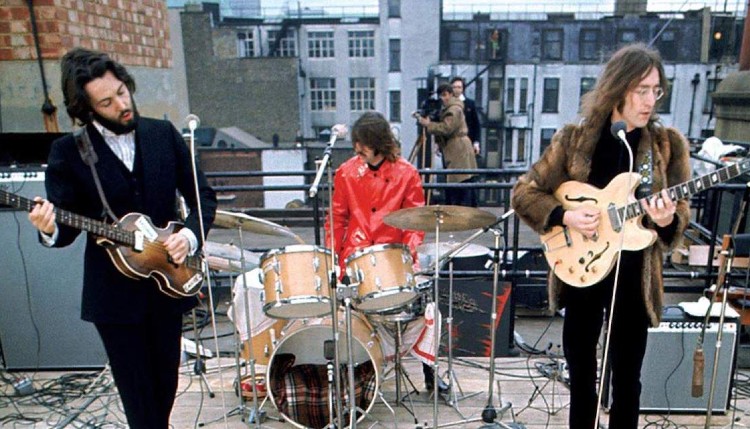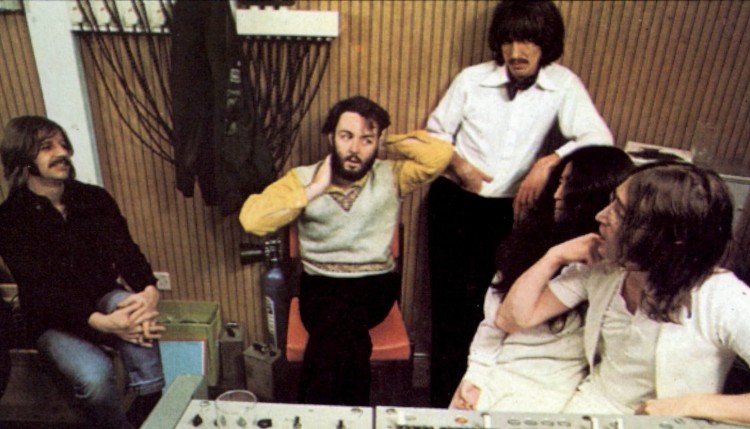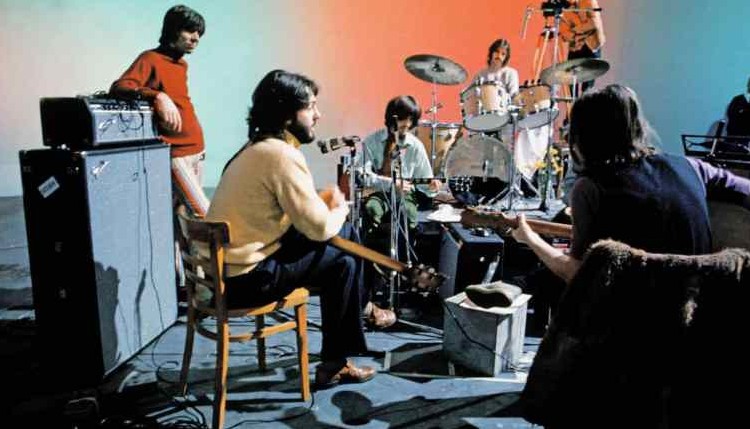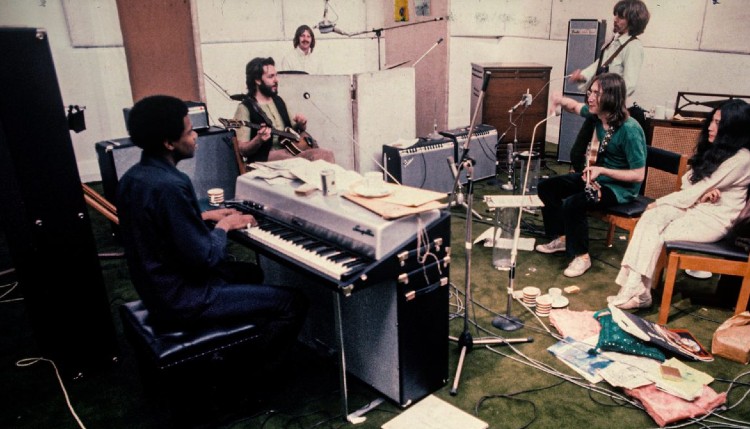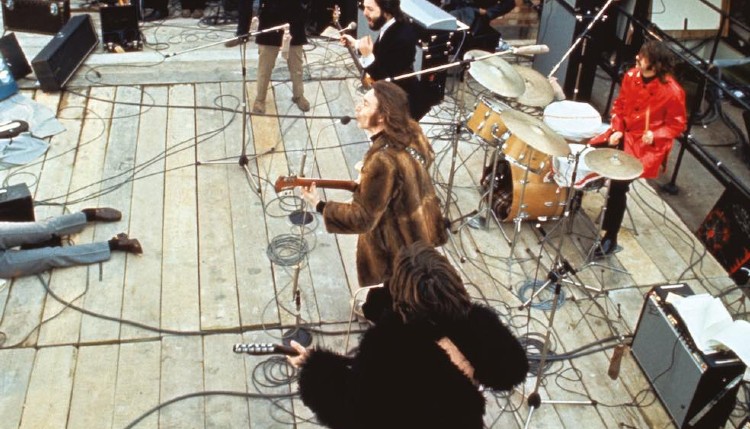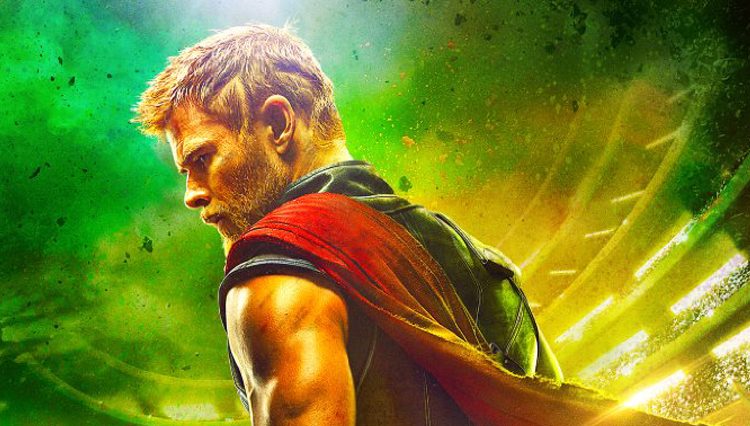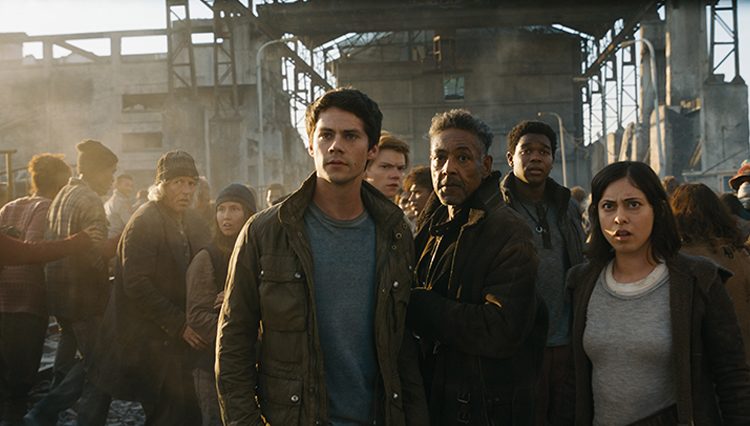“I’d like to say thank you on behalf of the group and ourselves, and I hope we pass the audition.”
The Beatles: Get Back (George Harrison/John Lennon/Paul McCartney/Ringo Starr) Apple Corps/Wingnut
It’s interesting, you grow up with all these stories about The Beatles and how much they hated each other when success and money dominated their young lives. The youth always intrigued me as well. In 1969, the members of the band might have appeared as world-weary wizards, elder statesmen of rock and pop, but in reality, they were all in their late 20s; kids, the way we would view them today with the changing face of life expectancy. At any rate, they’d never be old enough to understand or handle their success and the phenomena they each created.
They were individuals, yet in a band, and they certainly behaved that way. The nearest I can figure when observing the peculiar pitfalls of fame is that the person (or people) who becomes rich and famous at an early age (we’re talking late teens-early twenties for John, Paul, George, and Ringo) suffers a kind of impostor syndrome—the belief that one’s success is undeserved or has not been legitimately achieved as a result of one’s own efforts or skills.
How do you cope? Drugs and drinking to excess? Other self-destructive behaviors? Justification of work habits to the detriment of all other forms of creative input? It could be any or all of those qualities. The big takeaway from Peter Jackson’s enormous documentary series, The Beatles: Get Back, is that all of the Beatles were instrumental in not only the band’s success but also the success of each member. Their respective solo work was impressive, but they were better with (and for) each other than without.
The beginning of the end of The Beatles was not the Get Back sessions, the film, or the resulting Let It Be album. The beginning of the end of The Beatles was the trip to India to meet the Maharishi Mahesh Yogi, and the White Album. From the observer’s point of view, they came back from India demoralized. They were searching for meaning through transcendental meditation, and instead were witness to the Maharishi’s lecherous behavior toward their female friends. John Lennon wrote the song, “Sexy Sadie,” about the Maharishi.
McCartney had the idea (rightly or wrongly) to put the band back into the recording studio with a camera crew under the supervision of Michael Lindsay-Hogg who, for the purposes of this movie, acts more as a production assistant than a director. The other takeaway from Jackson’s work is that the Beatles did not hate each other. They seemed to get along and work together extremely well. There is some inevitable tension, but it seems to come from George Harrison (at least early on) when he “quits the band” at the end of the first episode.
No explanation is given except that we saw some footage early on of Paul and George quietly arguing—it’s the same footage we see in Hogg’s Let It Be movie from 1970, but with added angles and a teensy bit more context. The first two episodes are a bit of a drag because there’s a stock formula to all of this. Paul, John, and George rehearse and rehearse and rehearse. Then they sit around, tell stories, read newspaper and fanzine clippings, joke, tell more stories, drink tea, smoke cigarettes, and rehearse some more.
Hogg shot 60 hours’ worth of footage as well as 150 hours of audio; all of which you can feel in Jackson’s roughly 8 hours of movie. Simply put, it’s too long and too repetitive. The band rehearses four songs repeatedly over the course of three weeks in January of 1969, and you will hear these songs almost constantly throughout the movie: “Two of Us,” “Dig a Pony,” I’ve Got a Feeling,” and “Get Back.” I now, officially, hate these songs. I used to love them, but Jackson has killed them for me.
Other songs, such as “Let It Be,” “The Long and Winding Road,” Harrison’s “For You Blue” and “I Me Mine” are given only marginal attention (maybe that’s what upset George). If I were Jackson, in this case, I would have edited the footage more thematically rather than chronologically. He adopts a “calendar-style” format, moving from day-to-day until we get to the final day, January 30th, and the rooftop concert. This is what leads to all the repetition. There is never a complete song to be played, but for these four songs, and then we hear them one more freaking time! Live! On the rooftop!
The third episode is the strongest because we at least get out of the boring Twickenham and Apple studio locations with bare white walls and cycloramas and go up to the roof. Hogg has an ambitious plan. He has four cameras on the roof with the Beatles, one on a roof on the other side of the street for a wide shot, a hidden camera in the reception area desk, and three cameras out in the street to get spectator reactions. Jackson does an incredible job putting all these shots together and syncing up the audio. We get to see a much more colorful movie here.
This is London in January of 1969, and it is amazing to see. The kids love it, but the old people are square. They don’t get it, except for one old man who appreciates The Beatles. God bless him! The cops show up and tell them to shut down the show; all over 30 (30!) complaints of noise. I remember reading stories about this incident being staged, and it does seem that way for two reasons. The first is that they don’t do anything once they arrive at Apple and the second is that they obviously signed releases to appear in the movie. The resulting album and movie took over a year to mix and edit and were eventually released in May of 1970, a month after the band broke up.
In retrospect, it might not have been a good idea to make a movie and an album at the same time. One of my main issues with this mess is Michael Lindsay-Hogg. He just goes along with whatever McCartney suggests. He’s a “dogsbody,” directing his crew and not his performers, and he never takes charge. Hogg would pioneer music video directing, making films for The Beatles, The Rolling Stones, Wings, Elton John, and Whitney Houston. In 2000, he would direct Two of Us, starring Aidan Quinn as Paul McCartney and Jared Harris as John Lennon. The Beatles: Get Back is available on Disney Plus.


